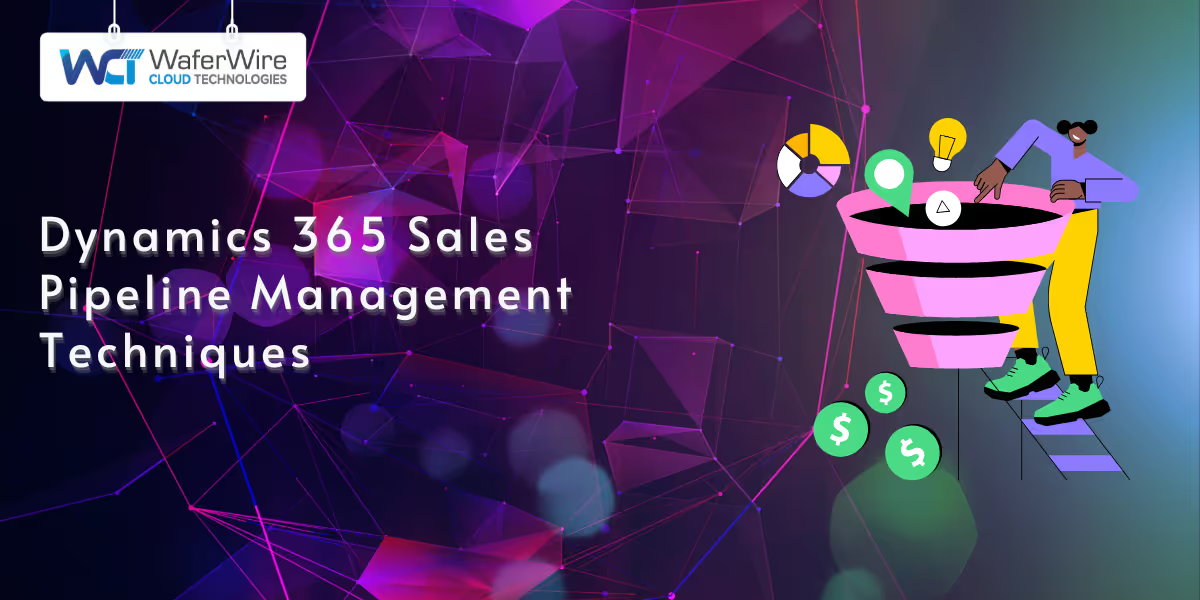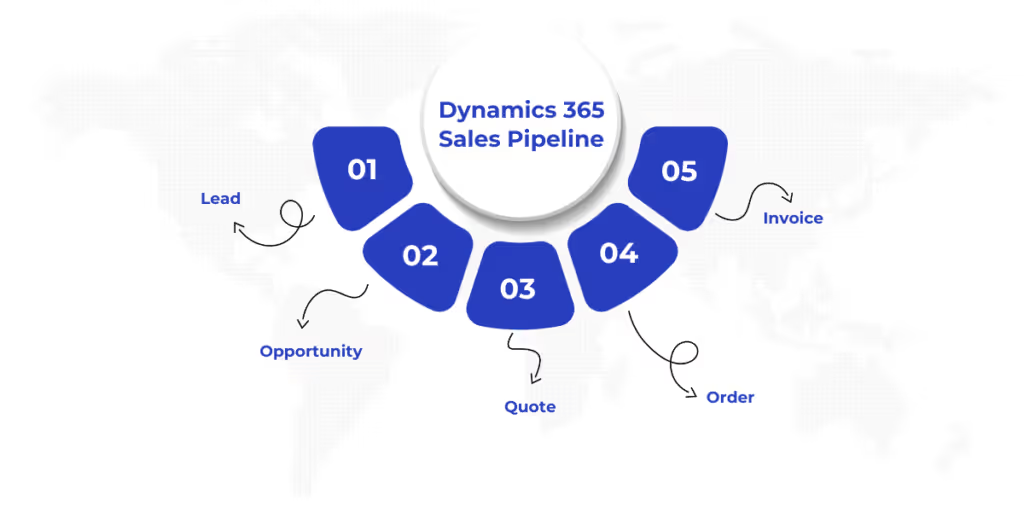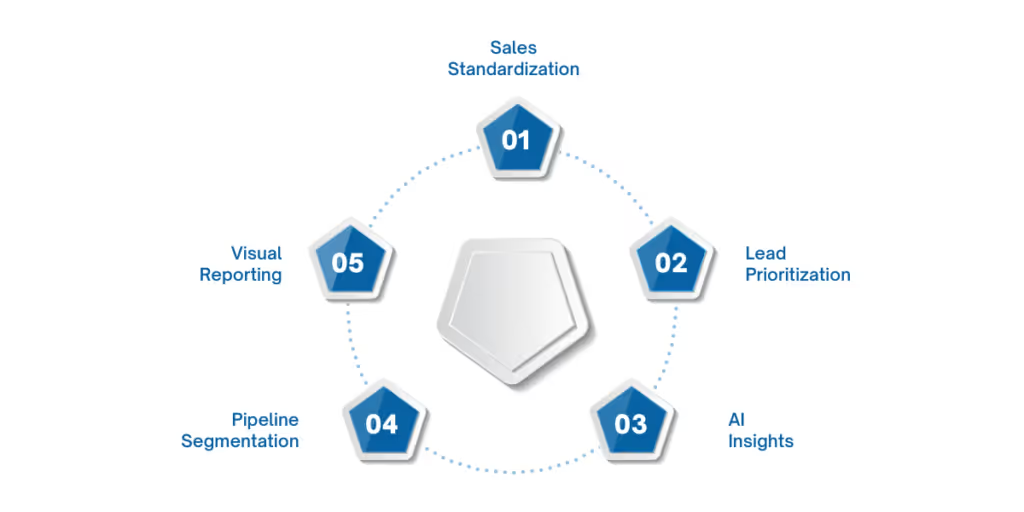

In today's competitive landscape, a well-managed sales pipeline is a strategic necessity, not just an option. Sales leaders need complete visibility into every pipeline stage. This allows them to accurately forecast revenue, identify bottlenecks, and make smarter, faster decisions. Without clear visibility into prospect status, even top teams risk losing deals and wasting effortt.
That’s where Customer Relationship Management (CRM) systems come in. Modern CRMs do more than just store contact information; they track and manage customer relationships. They enable dynamic, data-driven sales processes. Microsoft Dynamics 365 Sales stands out among top CRM platforms. It offers deep integration with the Microsoft ecosystem, AI-powered insights, and customizable workflows.
Whether you're managing a small inside sales team or a global sales force, the Dynamics 365 sales pipeline helps you track leads, nurture opportunities, and optimize your sales pipeline from end to end. In this guide, we’ll explore proven techniques for managing your sales pipeline so you can close deals more effectively and scale with confidence.

A sales pipeline is a visual representation of your sales process, outlining the progressive steps that a potential customer goes through, from initial contact to final purchase. It helps sales teams manage active deals, monitor progress, forecast revenue, and take proactive action at every stage of the buyer’s journey.
IMicrosoft Dynamics 365 Sales structures its pipeline around Business Process Flows (BPFs). These BPFs guide sales reps through consistent, repeatable stages.
While these flows can be customized, a typical Dynamics 365 pipeline includes the following key stages:
While these stages provide structure, every business operates differently. That’s why Dynamics 365 allows you to customize pipeline stages to align with your unique sales methodology.
To build an effective sales pipeline in Dynamics 365, start by designing a process that mirrors your sales team's real-world operations. Here's how to set up a streamlined, scalable pipeline:
Dynamics 365 allows you to define and manage multiple sales processes tailored to different product lines, regions, or buyer types. Using the Sales Hub, you can create standardized workflows that your reps follow from lead generation through to deal closure.
This improves team consistency and helps new reps ramp up quickly.
BPFs are at the core of Dynamics 365’s pipeline structure. BPFs visually guide users through required steps at each sales stage. They enforce data integrity by prompting reps to complete key fields or activities before progressing..
With BPFs, you create a structured and repeatable process that keeps every opportunity moving forward efficiently.
Manually transitioning between stages can lead to errors and consume significant time. With Power Automate (formerly Microsoft Flow), you can automate these transitions based on specific triggers.
Examples include:
Automation minimizes administrative overhead and ensures your pipeline remains current and accurate.
To maintain pipeline quality, set clear qualification criteria for moving prospects between stages.
Implementing qualification gates ensures that only viable deals enter the pipeline. This results in more accurate forecasts and improved close rates.
Also Read: Understanding SLAs in Dynamics 365 Customer Service

To maximize your Dynamics 365 Sales implementation, employ active, intelligent management techniques. These help your team focus on the right deals at the right time.
Below are some of the most effective ways to optimize pipeline performance using Dynamics 365 tools and features.
Fragmented sales processes lead to inconsistent results and unreliable forecasts. Standardizing pipeline stages and establishing uniform rules ensures every sales rep works from the same playbook.
Not every lead deserves equal attention. Dynamics 365 allows you to implement intelligent scoring models to help your team focus on the most promising opportunities.
Dynamics 365 Sales integrates AI capabilities to help you make smarter, faster decisions.
Segmentation helps you gain more control over your pipeline by breaking it down into smaller, more manageable parts.
Visibility is key. With Dynamics 365’s out-of-the-box dashboards and deep integration with Power BI, you can transform raw data into actionable insights.
Even with a robust platform like Dynamics 365 Sales, sales pipeline management can face roadblocks. These reduce efficiency and derail momentum. Identifying these common challenges early and implementing practical solutions makes all the difference in maintaining a high-performing pipeline.
Duplicate leads clog the system, confuse reps, and dilute reporting accuracy. Stale opportunities linger in the pipeline long after interest has waned. They distort forecasts and consume valuable time.
How to Overcome It:
Routine hygiene ensures your pipeline reflects reality, not wishful thinking.
Inconsistent Dynamics 365 usage by sales reps can lead to a fragmented and unreliable pipeline. Missing updates, incomplete data, and offline tracking break process continuity
How to Overcome It:
Reps are more likely to engage when the platform saves them time and directly supports their sales goals.
Outdated or incomplete data leads to poor forecasting, misaligned priorities, and missed opportunities.
How to Overcome It:
Real-time insights empower managers and reps to act quickly and with confidence.
When sales goals and pipeline metrics are misaligned, teams often focus on the wrong KPIs. This leads to short-term wins that don't support long-term growth.
How to Overcome It:
Bringing pipeline data and business goals into sync ensures every action drives measurable outcomes.
Also Read: Comprehensive Overview of Dynamics 365 Customer Insights
Effective sales pipeline management in Dynamics 365 Sales goes beyond just tracking deals. It's about building a system that empowers your team, sharpens forecasts, and accelerates revenue growth.
A well-maintained CRM like Dynamics 365 doesn’t just organize your pipeline—it becomes a strategic growth engine. But it requires ongoing attention.
Now is the time to assess your current pipeline practices. Your stages may be mapped—but do they truly align with your sales process? Are reps making the most of the system? And are you measuring what really matters?
Refine what’s working. Rethink what’s not. And if you need help optimizing your Dynamics 365 Sales environment for pipeline success, WaferWire is here to help.
As a trusted Microsoft Gold Partner, WaferWire brings deep expertise in Dynamics 365 implementations, sales automation, and CRM optimization. Whether you’re just getting started or ready to scale, we help you unlock the full potential of your sales tech stack.
Contact us today to streamline your sales process, sharpen your insights, and close more deals faster.
1. What is the sales pipeline in Dynamics 365?
The Dynamics 365 sales pipeline is a visual representation of your sales process that tracks leads and opportunities through defined stages—typically from lead, to opportunity, to quote, to order, and finally to invoice. It helps sales teams monitor deal progress, forecast revenue, and streamline follow-ups.
2. How do Business Process Flows (BPFs) work in Dynamics 365 sales pipeline management?
BPFs guide users through each stage of the sales pipeline by prompting required actions and data inputs. They ensure consistency and compliance across your sales team, making it easier to qualify leads, develop opportunities, and close deals with structured workflows.
3. Can I customize my sales pipeline stages in Dynamics 365?
Yes, Dynamics 365 allows full customization of sales pipeline stages to fit your unique sales methodology. You can create multiple sales processes, define custom milestones, and align activities or KPIs with each stage using Power Apps and the Sales Hub.
4. How can I use AI in the Dynamics 365 sales pipeline?
Dynamics 365 integrates AI-powered features such as predictive forecasting, relationship health analysis, and deal scoring. These tools help sales reps prioritize high-value opportunities, anticipate outcomes, and improve forecast accuracy through real-time insights.
5. What are some common challenges in managing a Dynamics 365 sales pipeline and how can I fix them?
Typical challenges include duplicate leads, stale opportunities, poor data quality, and inconsistent usage. Solutions include:
1. Enabling duplicate detection
2. Using automation for follow-ups
3. Implementing role-based training
4. Aligning pipeline KPIs with business goals
5. These steps ensure cleaner data, better engagement, and a more accurate pipeline.

